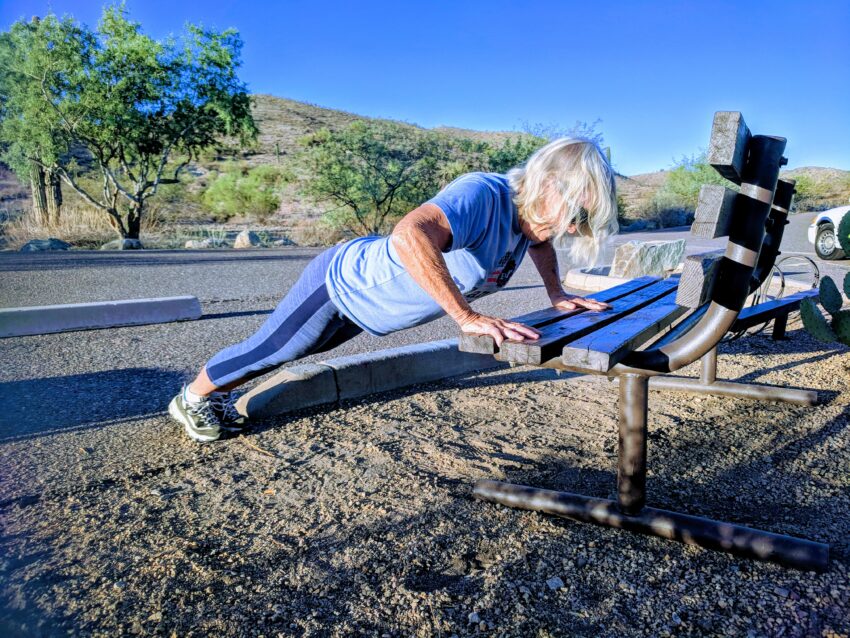What is Functional Training
Functional training is a type of exercise that focuses on improving our ability to perform everyday movements. Rather than simply focusing on building muscle or improving our physical appearance; it’s about being able to move our bodies in ways that are useful and practical. Functional training helps us to practice the movement patterns; like bending, twisting, lifting, pushing, pulling, and squatting, that are essential to participating in life.
Some common functional training exercises include:
- Squats
- Lunges
- Push-ups
- Pull-ups
- Rows
- Deadlifts
- Overhead presses
Less Functional Exercises
While all exercise has some benefit toward healthy movement, some exercises are more functional than others. A biceps curl is an example of a less functional exercise because it targets a single muscle and uses a single joint rather than recruiting a group of muscles and using multiple joints. In the movement of everyday life, it’s not often that we use a single joint and single muscle like we do in a preacher curl. The biceps curl plays a far more important role in general strength training and in bodybuilding; when hypertrophy is a priority.
Functional training challenges us to train the biceps similarly to the way we use them in real life, like when we are walking to the trash bin carrying a heavy bag of trash in one hand with a bent arm. In real life we use multiple muscle groups and joints to get the job done. We couldn’t lift that heavy bag to shoulder height and toss it into the trash bin with preacher curls alone. We must also practice bending, twisting, lifting, pushing, pulling, and squatting.
In the Gym? Try a Dynamic Warm Up and Compound Exercises
Like most pre-exercise routines, a dynamic warm up involves preparing the body for physical activity but it includes more movement compared to static stretching. It aims to not only increase blood flow and flexibility but also functional mobility; making it easier to move during your workout. Check out my post about a full-body workout on the basketball court for some common dynamic warm up options.
Compound exercises are exercises that use multiple joints and muscle groups simultaneously. Not only do they more closely mimic the way we use our bodies in everyday life, they’re a more efficient way to train as well. If we perform a shoulder press while seated on an exercise ball rather than a shoulder press seated or standing, we can add dynamic core work to the movement. For a few more ideas about how to incorporate compound exercises, check out my Cardio Circuit post.
At Home? Try Body Weight Exercises
No equipment? No problem! If healthy and pain-free movement is the goal, we can easily get started without equipment by performing the 5 Foundational Movement Patterns to Practice for Life. Each of these can be performed without weights, but guidelines for adding weights are included. Grab a mat, find a mirror, and focus on form.
Want to Get Outside? Find the Incline and a Dynamic Environment
From hills to stairs the outdoors offer endless options for flexion and extension of the hip, knee, and ankle joints. The added challenge of outdoors is always the dynamic environment. Hiking, even on a flat trail, offers a dynamic experience for the body that can’t be replicated on the treadmill. Make use of what’s around you. Use a bench for a push up variation or a box jump variation. Get creative and have fun. For more ideas, check out my post on Creating a Stimulating Outdoor Circuit.
Getting Started with Functional Training
If you’re new to functional fitness, it’s important to begin slowly and gradually increase the intensity and challenge of your workouts over time. You should consult your healthcare professional before beginning any health or fitness program. You should also listen to your body. Always stop if you’re feeling pain. Hydrate before, during and after your workout and prepare with good nutrition.
Choose exercises that are challenging but not too difficult. Consider an intensity scale of 1-10, with 1 being almost no difficulty and 10 being the most difficult. You should choose an exercise that challenges you to your idea of a 3-6. Start with a few sets of each exercise and gradually increase the number as you get stronger. Use exercise variations to keep yourself challenged. Most importantly focus on maintaining proper form throughout each exercise.
Your Functional Training Challenge
By incorporating functional training we can practice the foundational movement patterns that keep us capable, independent, and doing the things we love. Your challenge is to make a plan to practice. Create a SMART goal ( Specific, Measurable, Achievable, Relevant, Time-bound) based on the suggested here and share it with me in the comments.
Sources
Khore. (2024, February 5). What are compound exercises?: AFA Blog. Australian Fitness Academy. https://www.fitnesseducation.edu.au/blog/education/what-are-compound-exercises/
